Comcast 2013 Annual Report Download - page 97
Download and view the complete annual report
Please find page 97 of the 2013 Comcast annual report below. You can navigate through the pages in the report by either clicking on the pages listed below, or by using the keyword search tool below to find specific information within the annual report.-
 1
1 -
 2
2 -
 3
3 -
 4
4 -
 5
5 -
 6
6 -
 7
7 -
 8
8 -
 9
9 -
 10
10 -
 11
11 -
 12
12 -
 13
13 -
 14
14 -
 15
15 -
 16
16 -
 17
17 -
 18
18 -
 19
19 -
 20
20 -
 21
21 -
 22
22 -
 23
23 -
 24
24 -
 25
25 -
 26
26 -
 27
27 -
 28
28 -
 29
29 -
 30
30 -
 31
31 -
 32
32 -
 33
33 -
 34
34 -
 35
35 -
 36
36 -
 37
37 -
 38
38 -
 39
39 -
 40
40 -
 41
41 -
 42
42 -
 43
43 -
 44
44 -
 45
45 -
 46
46 -
 47
47 -
 48
48 -
 49
49 -
 50
50 -
 51
51 -
 52
52 -
 53
53 -
 54
54 -
 55
55 -
 56
56 -
 57
57 -
 58
58 -
 59
59 -
 60
60 -
 61
61 -
 62
62 -
 63
63 -
 64
64 -
 65
65 -
 66
66 -
 67
67 -
 68
68 -
 69
69 -
 70
70 -
 71
71 -
 72
72 -
 73
73 -
 74
74 -
 75
75 -
 76
76 -
 77
77 -
 78
78 -
 79
79 -
 80
80 -
 81
81 -
 82
82 -
 83
83 -
 84
84 -
 85
85 -
 86
86 -
 87
87 -
 88
88 -
 89
89 -
 90
90 -
 91
91 -
 92
92 -
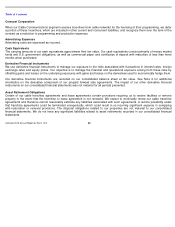 93
93 -
 94
94 -
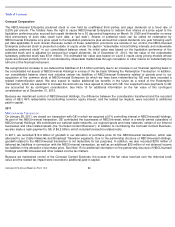 95
95 -
 96
96 -
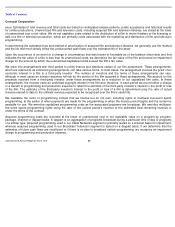 97
97 -
 98
98 -
 99
99 -
 100
100 -
 101
101 -
 102
102 -
 103
103 -
 104
104 -
 105
105 -
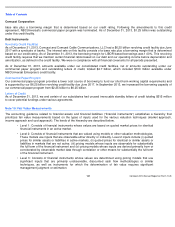 106
106 -
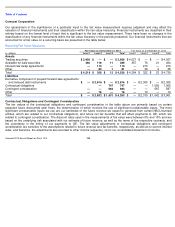 107
107 -
 108
108 -
 109
109 -
 110
110 -
 111
111 -
 112
112 -
 113
113 -
 114
114 -
 115
115 -
 116
116 -
 117
117 -
 118
118 -
 119
119 -
 120
120 -
 121
121 -
 122
122 -
 123
123 -
 124
124 -
 125
125 -
 126
126 -
 127
127 -
 128
128 -
 129
129 -
 130
130 -
 131
131 -
 132
132 -
 133
133 -
 134
134 -
 135
135 -
 136
136 -
 137
137 -
 138
138 -
 139
139 -
 140
140 -
 141
141 -
 142
142 -
 143
143 -
 144
144 -
 145
145 -
 146
146 -
 147
147 -
 148
148 -
 149
149 -
 150
150 -
 151
151 -
 152
152 -
 153
153 -
 154
154 -
 155
155 -
 156
156 -
 157
157 -
 158
158 -
 159
159 -
 160
160 -
 161
161 -
 162
162 -
 163
163 -
 164
164 -
 165
165 -
 166
166 -
 167
167 -
 168
168 -
 169
169 -
 170
170 -
 171
171 -
 172
172 -
 173
173 -
 174
174 -
 175
175 -
 176
176 -
 177
177 -
 178
178 -
 179
179 -
 180
180 -
 181
181 -
 182
182 -
 183
183 -
 184
184 -
 185
185 -
 186
186 -
 187
187 -
 188
188 -
 189
189 -
 190
190 -
 191
191 -
 192
192 -
 193
193 -
 194
194 -
 195
195 -
 196
196 -
 197
197 -
 198
198 -
 199
199 -
 200
200 -
 201
201 -
 202
202 -
 203
203 -
 204
204 -
 205
205 -
 206
206 -
 207
207 -
 208
208 -
 209
209 -
 210
210 -
 211
211 -
 212
212 -
 213
213 -
 214
214 -
 215
215 -
 216
216 -
 217
217 -
 218
218 -
 219
219 -
 220
220 -
 221
221 -
 222
222 -
 223
223 -
 224
224 -
 225
225 -
 226
226 -
 227
227 -
 228
228 -
 229
229 -
 230
230 -
 231
231 -
 232
232 -
 233
233 -
 234
234 -
 235
235 -
 236
236 -
 237
237 -
 238
238 -
 239
239 -
 240
240 -
 241
241 -
 242
242 -
 243
243 -
 244
244 -
 245
245 -
 246
246 -
 247
247 -
 248
248 -
 249
249 -
 250
250 -
 251
251 -
 252
252 -
 253
253 -
 254
254 -
 255
255 -
 256
256 -
 257
257 -
 258
258 -
 259
259 -
 260
260 -
 261
261 -
 262
262 -
 263
263 -
 264
264 -
 265
265 -
 266
266 -
 267
267 -
 268
268 -
 269
269 -
 270
270 -
 271
271 -
 272
272 -
 273
273 -
 274
274 -
 275
275 -
 276
276 -
 277
277 -
 278
278 -
 279
279 -
 280
280 -
 281
281 -
 282
282 -
 283
283 -
 284
284 -
 285
285 -
 286
286 -
 287
287 -
 288
288 -
 289
289 -
 290
290 -
 291
291 -
 292
292 -
 293
293 -
 294
294 -
 295
295 -
 296
296 -
 297
297 -
 298
298 -
 299
299 -
 300
300 -
 301
301 -
 302
302 -
 303
303 -
 304
304 -
 305
305 -
 306
306 -
 307
307 -
 308
308 -
 309
309 -
 310
310 -
 311
311 -
 312
312 -
 313
313 -
 314
314 -
 315
315 -
 316
316 -
 317
317 -
 318
318 -
 319
319 -
 320
320 -
 321
321 -
 322
322 -
 323
323 -
 324
324 -
 325
325 -
 326
326 -
 327
327 -
 328
328 -
 329
329 -
 330
330 -
 331
331 -
 332
332 -
 333
333 -
 334
334 -
 335
335
 |
 |

Table of Contents
Comcast Corporation
enue. Estimates of total revenue and total costs are based on anticipated release patterns, public acceptance and historical results
for similar productions. Unamortized film and television costs, including acquired film and television libraries, are stated at the lower
of unamortized cost or fair value. We do not capitalize costs related to the distribution of a film to movie theaters or the licensing or
sale of a film or television production, which are primarily costs associated with the marketing and distribution of film and television
programming.
In determining the estimated lives and method of amortization of acquired film and television libraries, we generally use the method
and the life that most closely follow the undiscounted cash flows over the estimated life of the asset.
Upon the occurrence of an event or a change in circumstance that was known or knowable as of the balance sheet date and that
indicates the fair value of a film is less than its unamortized costs, we determine the fair value of the film and record an impairment
charge for the amount by which the unamortized capitalized costs exceed the film’s fair value.
We enter into arrangements with third parties to jointly finance and distribute certain of our film productions. These arrangements,
which are referred to as cofinancing arrangements, can take various forms. In most cases, the arrangement involves the grant of an
economic interest in a film to a third-
party investor. The number of investors and the terms of these arrangements can vary,
although in most cases an investor assumes full risk for the portion of the film acquired in these arrangements. We account for the
proceeds received from a third-
party investor under these arrangements as a reduction to our capitalized film costs. In these
arrangements, the investor owns an undivided copyright interest in the film and, therefore, in each period we record either a charge
or a benefit to programming and production expense to reflect the estimate of the third-party investor’
s interest in the profit or loss
of the film. The estimate of the third-party investor’
s interest in the profit or loss of a film is determined using the ratio of actual
revenue earned to date to the ultimate revenue expected to be recognized over the film’s useful life.
We capitalize the costs of programming content that we license but do not own, including rights to multiyear live-
event sports
programming, at the earlier of when payments are made for the programming or when the license period begins and the content is
available for use. We amortize capitalized programming costs as the associated programs are broadcast. We amortize multiyear,
live-event sports programming rights using the ratio of the current period’
s revenue to the estimated total remaining revenue or
under the terms of the contract.
Acquired programming costs are recorded at the lower of unamortized cost or net realizable value on a program by program,
package, channel or daypart basis. A daypart is an aggregation of programs broadcast during a particular time of day or programs
of a similar type. Acquired programming used in our Cable Networks segment is primarily tested on a channel basis for impairment,
whereas acquired programming used in our Broadcast Television segment is tested on a daypart basis. If we determine that the
estimates of future cash flows are insufficient or if there is no plan to broadcast certain programming, we recognize an impairment
charge to programming and production expense.
Comcast 2013 Annual Report on Form 10
-
K
92
